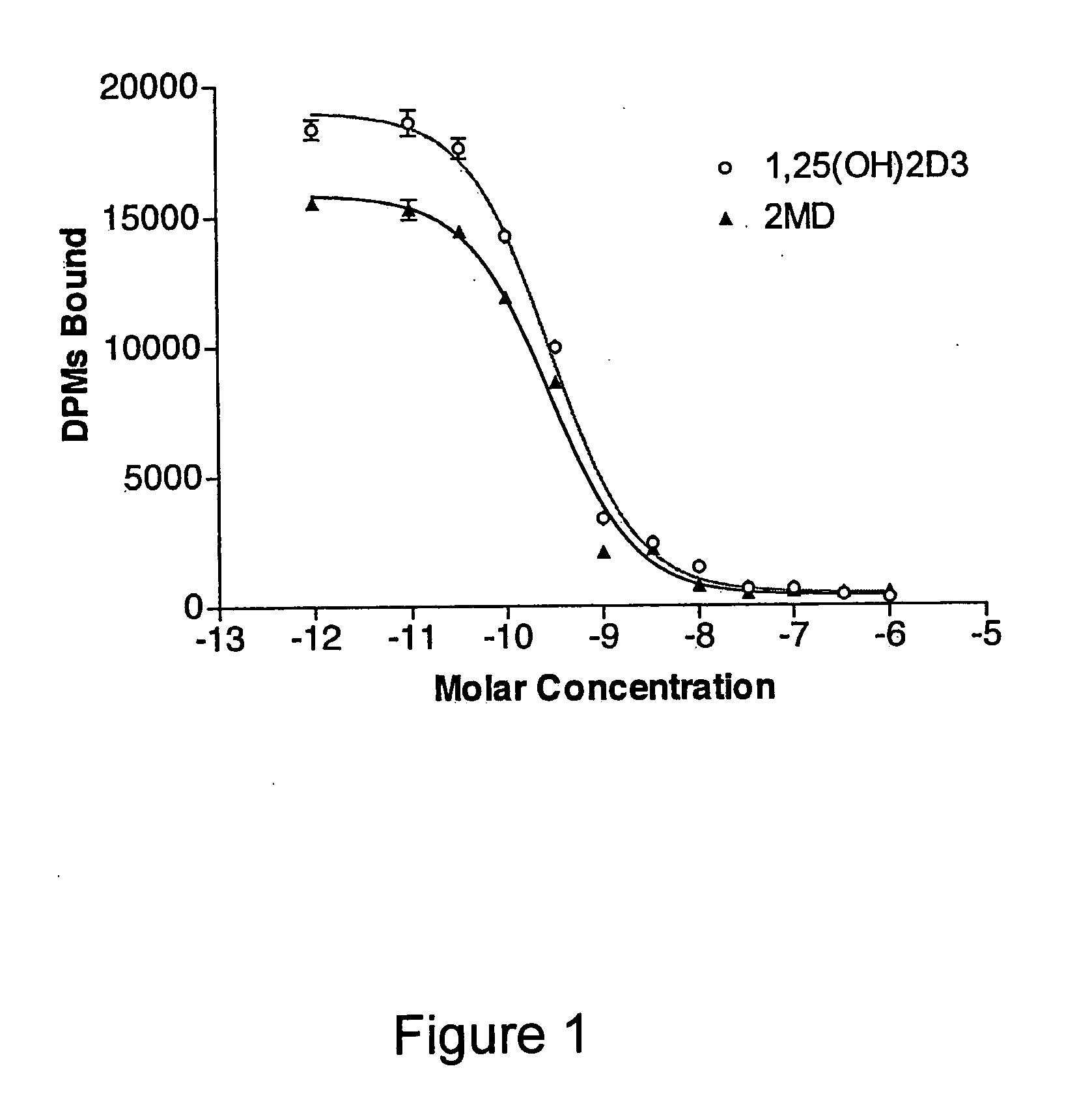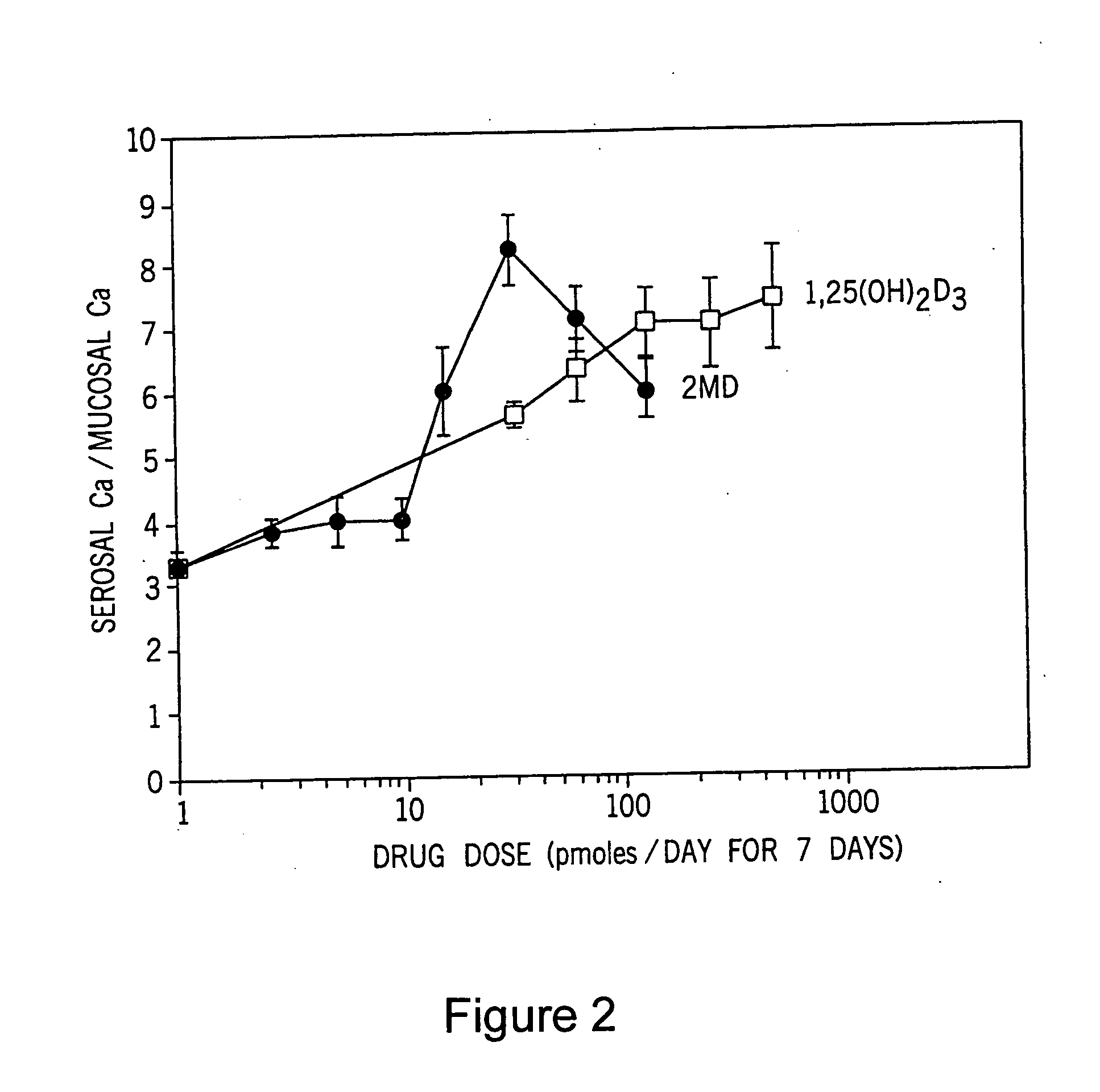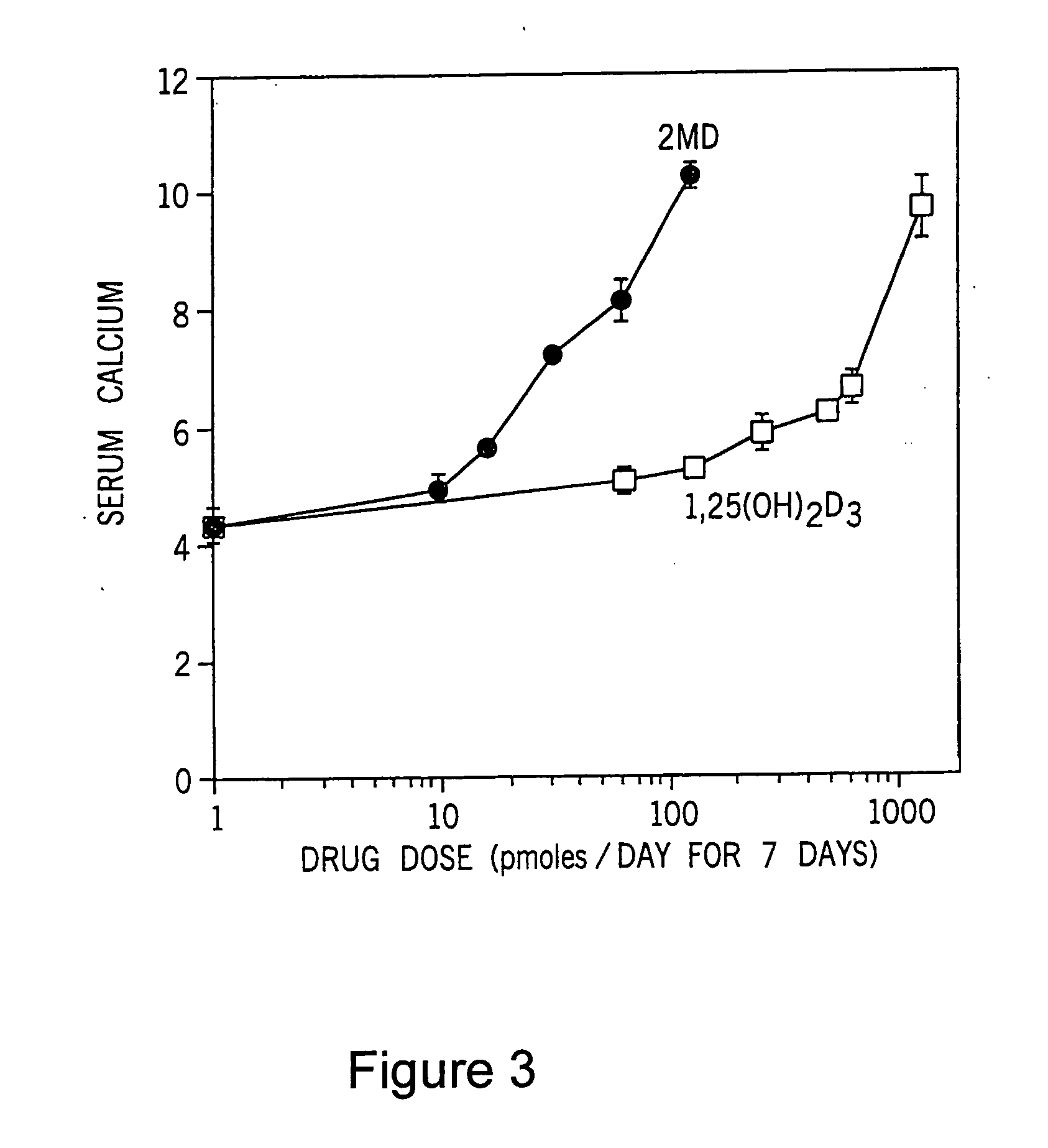Use of 2-methylene-19-nor-20(S)-1alpha,25-dihydroxyvitamin D3 for the prophylaxis of bone diseases
a technology of vitamin d3 and 2methylene19nor20 (s)1, which is applied in the field of vitamin d compounds, can solve the problems of bone loss, bone mass, and bone strength reduction, and achieve the effects of increasing bone strength, increasing breaking strength, and increasing bone strength
- Summary
- Abstract
- Description
- Claims
- Application Information
AI Technical Summary
Benefits of technology
Problems solved by technology
Method used
Image
Examples
Embodiment Construction
[0037] 2-methylene-19-nor-20(S)-1α,25-dihydroxyvitamin D3 (referred to herein as 2MD) was synthesized and tested. Structurally, this 19-nor analog is characterized by the general formula I previously illustrated herein.
[0038] The preparation of 2-methylene-19-nor-20(S)-1α,25-dihydroxyvitamin D3 having the basic structure I can be accomplished by a common general method, i.e. the condensation of a bicyclic Windaus-Grundmann type ketone II with the allylic phosphine oxide III to the corresponding 2-methylene-19-nor-vitamin D analog IV followed by deprotection at C-1 and C-3 in the latter compound:
[0039] In the structures II, III, and IV groups Y1 and Y2 are hydroxy-protecting groups, it being also understood that any functionalities that might be sensitive, or that interfere with the condensation reaction, be suitably protected as is well-known in the art. The process shown above represents an application of the convergent synthesis concept, which has been applied effectively for t...
PUM
 Login to View More
Login to View More Abstract
Description
Claims
Application Information
 Login to View More
Login to View More - R&D
- Intellectual Property
- Life Sciences
- Materials
- Tech Scout
- Unparalleled Data Quality
- Higher Quality Content
- 60% Fewer Hallucinations
Browse by: Latest US Patents, China's latest patents, Technical Efficacy Thesaurus, Application Domain, Technology Topic, Popular Technical Reports.
© 2025 PatSnap. All rights reserved.Legal|Privacy policy|Modern Slavery Act Transparency Statement|Sitemap|About US| Contact US: help@patsnap.com



